第49章
It is the share in the return, thus credited to the individual productive factor, which is usually called shortly the "return" of the factor in question; -- the return of labour, return of land, return of capital. I shall describe it as the "Productive Contribution" (see Ursprung des Werthes, p. 177), in order that it may always be clear whether we are speaking of the return as a whole, or of the share of the single factor in the return. The productive contribution, then, is that portion of return in which is confined the work of the individual productive element in the total return of production. The sum of all the productive contributions exactly exhausts the value of the total return.
It need scarcely be said that, as a matter of fact, calculation can rarely be made so exactly, and never so comprehensively. The equations indeed are all set down, and in every case the productive outlay is estimated according to the standard of the greatest attainable return. But the stating of the equations is frequently made with only a trifling degree of exactitude; and the sum of all the equations is never fully taken, and thus cannot be divided out among the individual elements. None the less we are constantly trying to ascertain the result of the addition and division; only that, instead of calculating directly, we try to attain our end, in a somewhat circumstantial way, by a method of testing. The values obtained in the individual case are applied, so far as they appear suitable, to other cases, and corrected, the one by the other, till in the end the right division is attained. And this is rendered immeasurably easier by the fact that we already possess, in the familiar and authenticated productive values, a key to the division which only requires to be adapted to the changes which emerge from time to time, At no time has the whole mass of production goods to be calculated all at once; it is only the contributions of individual members among these which require to be calculated anew, and even for them a good basis is found in the old values. New calculations require to be made only in those branches of production where the attainable returns and their values either rise or fall. This gives rise to new equations for the factors in question, either with more favourable or less favourable total values. According as it is one or the other, will production be extended or limited, and productive elements attracted from other branches of production, or attracted to them, until the most favourable plan of production is again discovered. The experience obtained while transferring now one, now another productive element, and watching the effect of each combination upon the value of the return, gives us sufficient information as to the amount with which the individual elements are bound up in the total return.(1*)NOTES:
1. If we are to succeed in our calculation of the productive contributions there must be a sufficiently large number of equations. There must be at least as many equations as there are unknown quantities. Now this condition is certainly fulfilled.
How many unknown quantities are there? Just as many as there are classes of production goods distinguishable in exchange. Without doubt these are very numerous. When theorists speak simply of land, capital, and labour, they include within each of these groups an enormous number of classes of goods which in exchange are as far as possible from being homogeneous. The value of labour is not to be calculated as one thing; there must be separate calculations for every kind and quality of labour between which one can distinguish. In calculating the value of agricultural land there will be, in one and the same district, as many different and distinguishable types of land, as would be distinguished in the register of a perfectly exact land tax imposed both on the cultivating and propertied agricultural classes. As to capital and its incalculable variety of forms we need not speak. But however far exchange may be specialised, the classes of productive combinations are undoubtedly even more numerous than the classes of production goods. The classes of combinations into which a good like iron or coal (even of one distinct origin or quality) may be introduced, are incalculable, and the same may be said of unskilled or day's labour. One and the same field is planted in rotation with the most various crops. And thus it comes that a mere change in the quantity of the same kind of goods in a group is sufficient to produce a new equation. Among all the many kinds of goods employed in production, it would be difficult to find one which, either as regards quantity or kind, would always be combined with others according to the same unalterably fixed formula. Different degrees of wealth, of knowledge, of skill, of local conditions, involve that even those kinds of goods which only admit of one single kind of employment, -- that is to say, which are only suited to produce one single kind of product -- must, at the same time and for the same purpose, go into a manifold variety of combinations. If there are exceptions to this rule they are only isolated ones. The contribution of such goods can, however, still be calculated -- always supposing that there are not two such elements in one and the same group. In this case, indeed, the principle we have established would not work, because we should have two unknown quantities and only one equation.